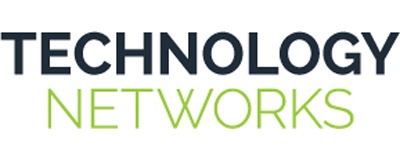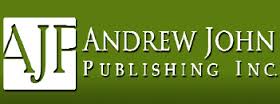Markert Analysis
The Pharma Industry is responsible for the development, production and marketing of medicines. According to IMS Health Consulting, an international research company, in 2012 the size of the world pharmaceutical market reached $940 billion. In monetary terms it grew by 6%. In the future the sector is expected to grow at no less than 3% to 4% a year and if this happens the global Pharmaceutical Market is expected to reach $1.1 trillion by 2015 and will reach $1.2 trillion in a pair of 2016 and up to $1.5 trillion by 2020. The global demographic, epidemiological and economic changes are transforming the Pharmaceutical Market. The world population is growing rapidly and is projected to rise from 7 billion in 2011 to 7.7 billion in 2020 and 9.6 billion in 2050, hence a rise within the demand for pharmaceuticals. The world Pharmaceutical Market is worth US$300 billion a year, a figure expected to rise to US$400 billion within three years. Economically, the south africa is well positioned to be the one in every ofnext growth engine of global Pharmaceutical Business many countries in the region enjoy robust economic growth and the highest cash reserves per capita in the world. The Pharmaceutical Market is consequently flourishing as the increasing middle class demands higher care, and government healthcare disbursement continues to grow. The Pharmaceutical Market in the republic of south africa is probably going to grow by between 10 and 15 % annually over the next three years, outstripping more mature markets, forecasts a report from URCH Publishing. The African Pharma company are showing consistent growth over the last years in particular in the space of specialised medication. The market for Pharmaceutical product is still expected to grow in many countries across the region.
Target Audience
-
Researchers in development of New Medicine
-
Health Professionals
-
Business Development Professionals
-
Consultants and Pharma Service Provider
-
Pharmacists
-
Professors and Students From Academia
-
Graduates and Postgraduates etc..
Why it's in Cape Town, South Africa:
Cape Town ranks third among the foremost urban areas in South Africa, after Johhanesberg, and has roughly the similar population as the Durban Metropolitan Area. It’s also the provincial capital and primate city of the Western cape.
As the seat of the National Parliament it’s additionally the legislative capital of the country. It forms part of the City of cape town metropolitian municipality. The city is famous for its horbour, for its natural setting in the Cape Floristic Region, as well as for such well-known landmarks as Table Mountain and Cape Purpose. As of 2014 it’s the 10th most populous city in Africa and residential to 64% of the Western Cape's population. It’s one among the foremostism cities in the world, reflecting its role as a major destination for immigrants and expatraites to South Africa. The city was named the World Design Capital for 2014 by the International Council of Societies Industrial Design. In 2014, Cape Town was named the best place in the world to visit by both The New York Times and also the telegraph
Why to attend???
With members from around the world focused on learning about Pharma, Pharmaceutics and Pharmaceutical technology; this is your single best opportunity to reach the largest assemblage of participants. Conduct demonstrations, distribute information, meet with current and potential customers, make a splash with a new product line, and receive name recognition at this 3-day event. World-renowned speakers, the most recent techniques, tactics, and the newest updates in fields are hallmarks of this conference.
Market of Spending on medicines
Past spending growth offers few clues to the level of growth to expect through 2015 – Unprecedented dynamics square measure are at play — including historically high levels of patent expiry, rapid expansion of demand for medicines within the world's fastest growing economies, fewer new medicines reaching patients, and additional moderate uptake of these that do become available – These dynamics are driving rapid shifts within the mixture of spending between branded merchendise and generics; and between spending in the major developed countries and those 17 high growth emerging countries referred to as 'pharmerging‘.
-
Spending on medicines which was estimated at $856bn in 2010, is expected to achieve nearly $1,100bn in 2015, reflecting a slowing growth rate of 36% over the five year period compared to 6.2 % annual growth over the past five years
-
A distinct shift is additionally expected within the market shares across the world, with the US and Europe share of global spending declining
-
Meanwhile, 17 high growth emerging markets (pharmerging) as well as China, India, Brazil, Russia and Mexico will contribute 28% of total spending by 2015, up from only 12 per cent in 2005
Global Pharma Market Growth
· According to IMS Health Consulting, an global research company, in 2012 the dimensions of the global pharmaceutical market reached $940 billion. In financial terms it grew by 6%. In the future the sector is expected to grow at no less than 3% to 4% a year and if this happens the world pharmaceutical market is expected to achieve $1.1 trillion by 2015 and will reach $1.2 trillion in 2016 and up to $1.5 trillion by 2020. The global demographic, epidemiological and economic changes are transforming the pharmaceutical market. The world population is growing rapidly and is projected to rise from seven billion in 2011 to 7.7 billion in 2020 and 9.6 billion in 2050, hence an increase in the demand for pharmaceuticals.
· Sending on medicines can reach nearly $1,100Bn in 2015, reflecting a slowing growth rate of 3-6% over the five year period compared to 6.2% annual growth over the past five years. Absolute global disbursal growth is anticipated to be $210-240Bn, compared to $251Bn since m2005.The U.S. share of global spending will decline from 41% in 2005 to 31% in 2015, while the share of spending from the top 5 European countries will decline from 20% to 13% over the same period. Meanwhile, 17 high growth emerging markets led by China, can contribute 28% of total spending by 2015, up from only 12% in 2005.The next five years will also see associate innursing accelerating shift in spending toward generics, rising to 39% of paying in 2015, up from 20% in 2005.
African Pharma Market Growth
. Big Pharma's latest frontier is Africa! Yes, drugmakers have been active on the continent for years, primarily in fighting infectious diseases. But like other markets with an emerging middle class, Africa is seeing an increase in chronic disease--and that puts more Africans in line for prescription drugs.
As Reuters reports, the African pharma market is expected to grow to $45 billion by 2020. Its growth rate--10.6% annually--matches up with Latin America's. As growth in the more established emerging markets slows down, Africa's could still be going strong.
"We're thinking hard about what happens when those emerging starts to slow because they are not going to continue growing at the rate that they're growing forever--and a place where we're putting a lot of our attention is Africa," Novartis ($NVS) CEO Joe Nimzees told Reuters
Importance and scope of Pharma Industry
The pharmaceutical trade represents one among the foremost dynamic and demanding industries within the world. As health care continues to grow and account for a big portion of the economy in the United States and throughout the world, the importance of the pharmaceutical and health care trade increases.
Over the years pharmacy has mature within the variety of prescribed drugs sciences through analysis and development processes. It is related to product yet services.
Discovered and developed area unit its merchandise and therefore the tendingit provides comes beneath the class of services
Pharmacy involves all the stages that are unit related to the drugs i.e. discovery, development, action, safety, formulation, use, quality control, packaging, storage, marketing, etc. This profession features a large socio-economic relevance to the Indian economy. In India this sector is among the longer term economy drivers. It’s committed to deliver top quality drugs and formulations at an inexpensive worth, so that majority of individual can afford them.
This profession features a socio-economic relevance to the Indian economy. The transformation of the arena from conventional pharmacy to drug experts, which is each desired and necessary to succed in the global standards, has already created commendable progress
Major Associations In South Africa
. National Association Of Pharmaceutical Manufactures
. Pharmaceutical Industry Association Of South Africa
. Pharmaceutical Societies Of South Africa
. National Community PHrmacist Associations
. Vending Association Of South Africa
. South Africa Medical Association
. Medical Association Of South Korolin
. Nova South Eastern University
About Conference
On behalf of African Pharma 2017 pharmaceutical events organizing committee, we invite Pharmacists, researchers, professors, scientific communities, delegates, students, business professionals and executives to attend the “5th African Pharma Congress” which is going to be held during December 12-14 2017 at Cape town, South Africa.
In the light of this theme, the conference series aims to provide a forum for international researchers from various areas of pharmacy like chemical processing, industrial practice, analytical methods and pharmacological actions by providing a platform for critical analysis of new data, and to share latest cutting-edge research findings and results about all aspects of Pharmacy.
The present pharma conference will be a multidisciplinary gathering which presents major areas such as formulation and drug delivery, pharmacological actions, analytical techniques and phytochemistry. The forum of Scientists, students and researchers from all corners of the globe, come together to discuss future scope. Each session of the meeting will be included with expert lectures, poster and discussions, join us to inculcate innovative ideas for the development of novel drug design with desired mechanism of action.
The value of Africa’s pharmaceutical industry rose from $4.7 billion in 2003 to $20.8 billion in 2013. By 2016 pharmaceutical spending on the continent is expected to reach $30 billion, driven by a 10.6% annual growth rate that is second only to Asia and in line with Latin America, reported IMS data. By 2020 the market will have more than doubled from current levels to $45-billion. Although it is likely to remain a niche market, the promise of Africa is that it will continue to grow in the next decade as Asia and Latin America start to reach maturity. Africa’s GDP—$2.4 trillion in 2013, and expected to climb to $3.3 trillion by 2020—is already on a par with Russia’s. Africa’s healthcare spending rose from $28.4 billion in 2000 to $117 billion in 2012. Over the same period, its per capita expenditure almost tripled, from $41 to $112.
Conferenceseries organizes 1000+ Global events every year across the globe with support from 1000+ more scientific societies and Publishes 700 Open access journals which contains over 50000 eminent personalities, reputed scientists as editorial board members.






